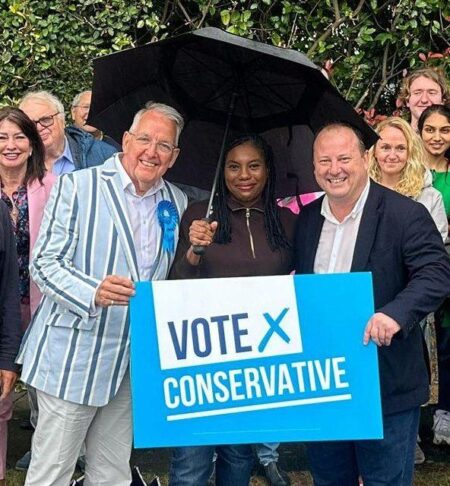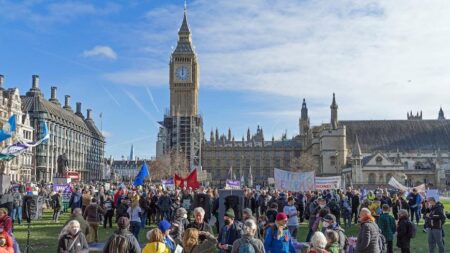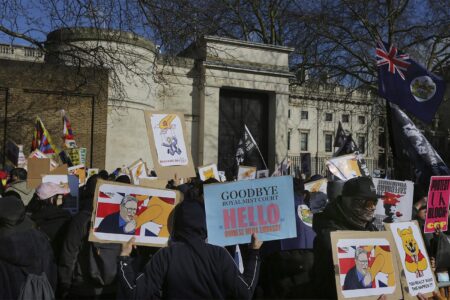In a world where diplomatic interactions often unfold with the careful choreography of seasoned performers, the recent encounter between U.S. President Donald Trump and French President Emmanuel Macron has drawn meaningful attention for its peculiar and seemingly intimate physicality. Analysts are labeling their interaction a “battle for control,” as both leaders engaged in an unusual display involving the grabbing of knees and wrists,a gesture that has sparked intrigue and debate among political experts. This article delves into the dynamics of their relationship, exploring the underlying messages conveyed through their body language and the broader implications for international diplomacy. As political observers dissect this moment, the question arises: what does this awkward physical interaction reveal about the evolving nature of power and rapport between two of the world’s most significant leaders?
Understanding the Dynamics of Trump and Macron’s Physical Interactions
Recent observations of Donald Trump and Emmanuel Macron‘s interactions have revealed a fascinating layer of non-verbal communication that transcends political discourse. The “awkward battle for control” characterized by moments of knee and wrist grabbing suggests a complex interplay of dominance and mutual recognition. These physical gestures are not merely incidental; they reflect deeper dynamics, including the psychological posturing between the leaders as they navigate their unique relationship. Some experts argue that such contact may signify a struggle for influence, where both leaders attempt to assert their authority while also accommodating the nuances of diplomatic protocol.
Furthermore, the meaning of these interactions can be analyzed through multiple lenses:
- Body Language: The closeness of their interactions reveals the extent to which physical presence plays a role in modern diplomacy.
- Cultural Differences: French and American political communication styles differ, resulting in varied interpretations of such gestures.
- Psychological Insights: Stakeholders in political negotiations often rely on subconscious cues, demonstrating how power dynamics can be conveyed through touch.
| Leader | Gesture | Interpretation |
|---|---|---|
| Trump | knee Grab | Assertion of dominance |
| Macron | Wrist Hold | Attempt to establish mutual respect |
This dynamic interplay not only reflects personal characteristics but also broader political strategies, making their physical interactions a valuable area for analysis. By examining these gestures more closely, observers can gain insights into the underlying motivations and intentions that shape international relations in an increasingly complex world.
Analyzing the Psychological Implications of Body Language in Political Contexts
The recent interactions between Trump and macron,described as a ‘battle for control’,highlight the significant role body language plays in political discourse. Political figures frequently enough communicate not just through words,but also through their physical demeanor,creating an intricate tapestry of nonverbal cues. In this context, grabbing knees and wrists can be perceived as an attempt to assert dominance or establish a connection. Experts suggest that such gestures can send mixed signals, as they might signify both vulnerability and aggression, complicating the dynamics of diplomatic exchanges. This explains why observers are dissecting these moments closely to decode the underlying emotional currents that drive political negotiations.
Analyzing body language further reveals a spectrum of implications for leadership and authority. For instance,when leaders engage in physical contact like holding onto wrists,it tends to signify a desire for intimacy or alliance. Though, a too-forceful grip could imply an attempt to overpower or control. the balance is delicate; it raises questions about the mutual perception of power between leaders. The following table summarizes key body language cues and their possible interpretations:
| Gesture | Possible Interpretation |
|---|---|
| Grabbing Knees | Sign of assertiveness or discomfort |
| Holding Wrists | desire for control or connection |
| Crossed Arms | Defensiveness or resistance |
| leaning In | Engagement or agreement |
Expert Insights on the Significance of Power Displays in International Relations
The recent encounter between Trump and Macron has provided a compelling case study into the intricate dynamics of power displays in international relations. Such gestures, often characterized by physicality and symbolic undertones, play a pivotal role in narratives of dominance and diplomacy. While handshakes have long been understood as political rituals, the current climate suggests that body language‚ÄĒincluding the way leaders hold their bodies and interact physically‚ÄĒis increasingly revealing about underlying tensions or alliances. Experts argue that moments like these, loaded with subtleties, can either kindle cooperation or exacerbate existing rivalries on the global stage.
A notable aspect of this interaction is the way it reflects cultural differences in leadership style‚ÄĒwhere American assertiveness contrasts with French elegance. Throughout history, leaders have used body language to communicate strength or solidarity, making it a vital element in diplomatic engagements. As we analyze these encounters, consider the following essential points:
- Physical Presence: A firm handshake versus a soft grasp can signal varying degrees of respect.
- Eye Contact: Sustained eye contact can convey confidence, while avoiding it may reflect uncertainty or discomfort.
- Personal Space: Leaders who stand too close may seek dominance, while distant body positioning could suggest a defensive stance.
Recommendations for Politicians on the use of Nonverbal Communication
In the realm of politics, nonverbal communication serves as a powerful tool, often speaking louder than words.politicians should be particularly mindful of their body language, as it can significantly influence public perception. Here are some recommendations to enhance their communicative effectiveness:
- Maintain Eye Contact: Establishing eye contact fosters trust and engagement. Politicians should strive to connect with their audience by looking them in the eye,which conveys confidence and sincerity.
- Utilize Open Gestures: Open body language, such as uncrossed arms and welcoming hand gestures, creates an approachable image. This invites individuals to engage in discussions and fosters a feeling of inclusivity.
- Be Aware of Personal Space: Understanding the nuances of personal space helps avoid discomfort. Politicians should respect physical boundaries while still being relatable to their audience.
Furthermore, the rhythm and timing of nonverbal cues should be carefully calibrated to align with verbal messages. A study that tracks the success of political figures in public speaking could illustrate how nonverbal signals either enhance or undermine their message.
| Action | Impact |
|---|---|
| Positive Facial Expressions | Builds rapport and encourages a favorable response. |
| Physical Proximity | Can convey intimacy or dominance, depending on context. |
| Posture Alignment | Communicates confidence or defensiveness based on stance. |
Assessing the Impact of Awkward Moments on Public Perception and Media Coverage
The recent physical interactions between Donald Trump and Emmanuel Macron have cast a spotlight on the nuances of political body language and its significant role in public perception. Experts argue that such awkward moments can dramatically influence how leaders are viewed both domestically and internationally. Observers may interpret these exchanges as indicators of power dynamics, signaling who holds control in the relationship, which can shape narratives surrounding diplomacy. As both leaders clasped each other’s knees and wrists, the optics of the situation were laden with implications, prompting diverse interpretations ranging from playful camaraderie to uncomfortable dominance.
in a world where media coverage is instantaneous, these moments are quickly analyzed and disseminated, adding layers to the political discourse. Public reaction often hinges on the emotional resonance of such interactions,leading to a polarized landscape of opinions. Consider the implications of this phenomenon through the table below illustrating the varying reactions to similar physical engagements among world leaders:
| Leader Interaction | Media Headline | Public Perception |
|---|---|---|
| Trump and Macron | “Awkward Battle for Control” | Mixed – Viewed as either humorous or aggressive |
| Obama and Merkel | “A moment of warmth” | Positive – Seen as a partnership |
| Putin and Xi | “Allies in Control” | Aggressive – Emphasizes power alignment |
These critical evaluations underscore a broader truth: awkward moments can serve as flashpoints in public discourse. They not only shape immediate reactions but also forge lasting impressions that influence future interactions on the global stage. Understanding the layered meanings behind such body movements offers a deeper insight into the evolving landscape of international relations.
Final Thoughts
the unconventional encounter between Donald Trump and Emmanuel Macron underscores not only the complexities of international diplomacy but also the personal dynamics that can influence political relationships. Experts suggest that the gestures observed during their interaction‚ÄĒgrabbing knees and wrists‚ÄĒmay reflect underlying tensions, power struggles, and the quest for dominance in a multifaceted geopolitical landscape. As global leaders navigate increasingly intricate challenges, the way they physically engage with one another may serve as an unorthodox yet telling barometer of their relations. With future summits undoubtedly on the horizon, it remains to be seen how this ‚Äúawkward battle for control‚ÄĚ will shape the trajectory of U.S.-French ties and, ultimately, the broader international order. As observers, we continue to watch closely, mindful that diplomacy often involves not just words, but the unspoken subtleties of human interaction.







